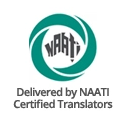
Tagalog Tongue: A Linguistic Journey
Begin a linguistic voyage through the captivating history of the Tagalog language. It traces its roots deep into the pre-colonial era of the Philippines. Tagalog belongs to the Austronesian language family. Moreover, it is one of the major languages spoken in the archipelago, particularly in the central and southern regions. Its linguistic ancestry intertwines with Malay, Javanese, and other languages spoken across maritime Southeast Asia.
At the heart of Tagalog’s linguistic tapestry lies its Austronesian origins, a lineage stretching back millennia. The Austronesian languages, renowned for their wide distribution across the Pacific, represent a diverse linguistic family, encompassing languages spoken in Madagascar, the Pacific Islands, and maritime Southeast Asia. Tagalog, with its intricate linguistic ancestry, shares connections with languages such as Malay, Javanese, and others spoken throughout the region.
Colonial Legacies and Modern Evolution
In the pre-colonial Philippines, Tagalog thrived as a vibrant means of communication among indigenous communities, reflecting the rich cultural tapestry of the archipelago. Its evolution during this era bore witness to the interplay of various linguistic influences, shaped by trade, migration, and cultural exchange across maritime Southeast Asia. Tagalog served as a vessel for storytelling, folklore, and oral traditions, weaving together the fabric of Filipino identity.
The arrival of Spanish colonizers in the 16th century ushered in a new chapter in Tagalog’s linguistic journey. Spanish influence permeated various aspects of Filipino society, leaving an indelible mark on Tagalog vocabulary through the introduction of loanwords and linguistic borrowings. Despite these colonial imprints, Tagalog remained resilient, retaining its core identity amidst the linguistic amalgamation, laying the groundwork for the emergence of modern Filipino.
A Linguistic Kaleidoscope: Sounds and Structure
Experience the rhythmic cadence of Tagalog as it dances through its phonetics and grammar. Tagalog employs a fascinating system of phonology characterized by its relatively small inventory of consonants and vowels. The language’s syllabic structure lends itself to melodic intonation, where stress and emphasis play a crucial role in conveying meaning and nuance.
Expressions of Identity: Tagalog in Society
Discover the multifaceted role of Tagalog within Filipino society, where it serves as a powerful medium of expression, communication, and cultural identity. Tagalog binds together diverse communities across the Philippines, bridging regional divides and fostering national unity. Its prevalence in media, literature, and everyday discourse underscores its enduring significance in contemporary Filipino life.
Script and Symbols
Marvel at the elegant script of Tagalog, known as Baybayin, an ancient writing system used prior to Spanish colonization. Baybayin features an intricate arrangement of characters representing syllables, conveying both aesthetic beauty and functional clarity. While its usage declined over centuries, efforts to revive and preserve Baybayin continue to thrive, celebrating Tagalog’s rich cultural heritage.
Preserving Heritage
At TranslateSwift, we celebrate the linguistic diversity of the world, including the vibrant tapestry of Tagalog. Our dedicated team of language experts specializes in providing seamless translation services tailored to your needs. Whether you seek Tagalog to English translation or vice versa, we ensure accuracy, reliability, and cultural sensitivity, fostering connections across linguistic boundaries.
Other Languages
- English
- Spanish
- German
- Dutch
- French
- Italian
- Afrikaans
- Albanian
- Amharic
- Arabic
- Armenian
- Azerbaijani
- Basque
- Belarusian
- Bengali
- Bosnian
- Bulgarian
- Cantonese
- Catalan
- Cebuano
- Chichewa
- Chinese - Simplified
- Chinese - Cantonese
- Chinese - Traditional
- Chinese - Mandarin
- Corsican
- Croatian
- Creole
- Czech
- Danish
- Dari
- Esperanto
- Estonian
- Farsi
- Filipino
- Finnish
- Frisian
- Galician
- Georgian
- Greek
- Gujarati
- Haitian Creole
- Hausa
- Hawaiian
- Hebrew
- Hindi
- Hmong
- Hungarian
- Icelandic
- Igbo
- Indonesian
- Irish
- Japanese
- Javanese
- Kannada
- Kazakh
- Khmer
- Korean
- Kurdish
- Kyrgyz
- Lao
- Latin
- Latvian
- Lithuanian
- Luxembourgish
- Macedonian
- Malagasy
- Malay
- Malayalam
- Maltese
- Maori
- Marathi
- Mongolian
- Montenegrin
- Myanmar
- Nepali
- Norwegian
- Odia
- Pashto
- Persian
- Polish
- Portuguese
- Punjabi
- Romanian
- Russian
- Samoan
- Scots Gaelic
- Serbian
- Sesotho
- Shona
- Sindhi
- Sinhala
- Slovak
- Slovenian
- Somali
- Sundanese
- Swahili
- Swedish
- Tajik
- Tagalog
- Tamil
- Telugu
- Thai
- Turkish
- Ukrainian
- Urdu
- Uyghur
- Uzbek
- Vietnamese
- Welsh
- Xhosa
- Yiddish
- Yoruba
- Zulu
